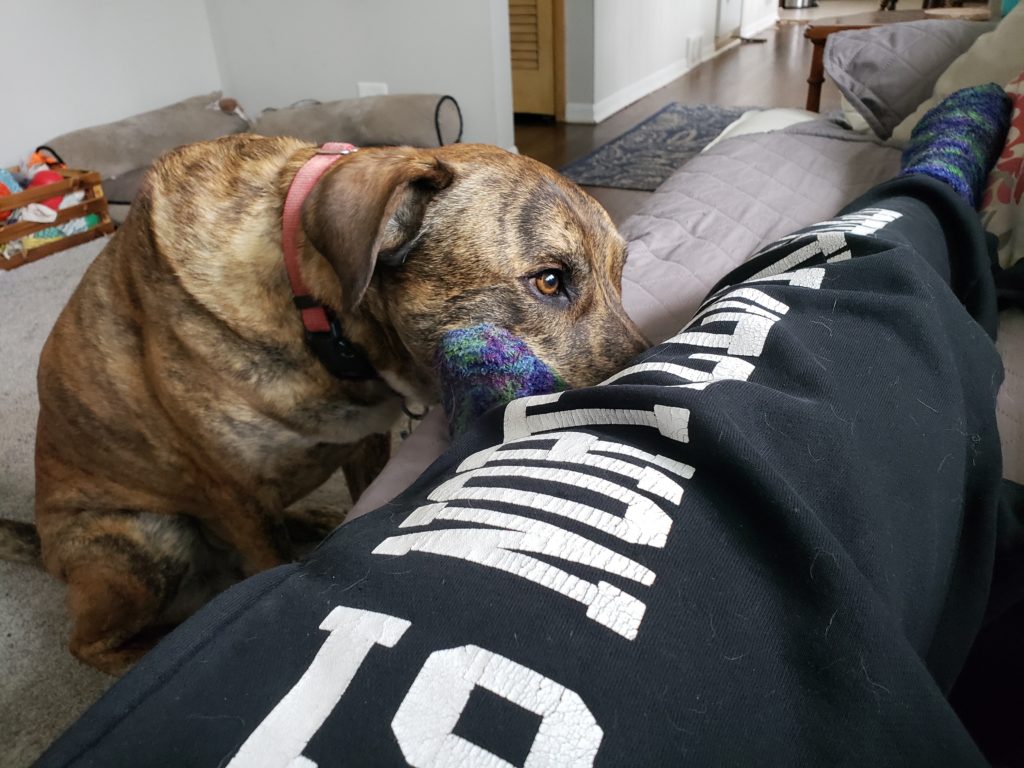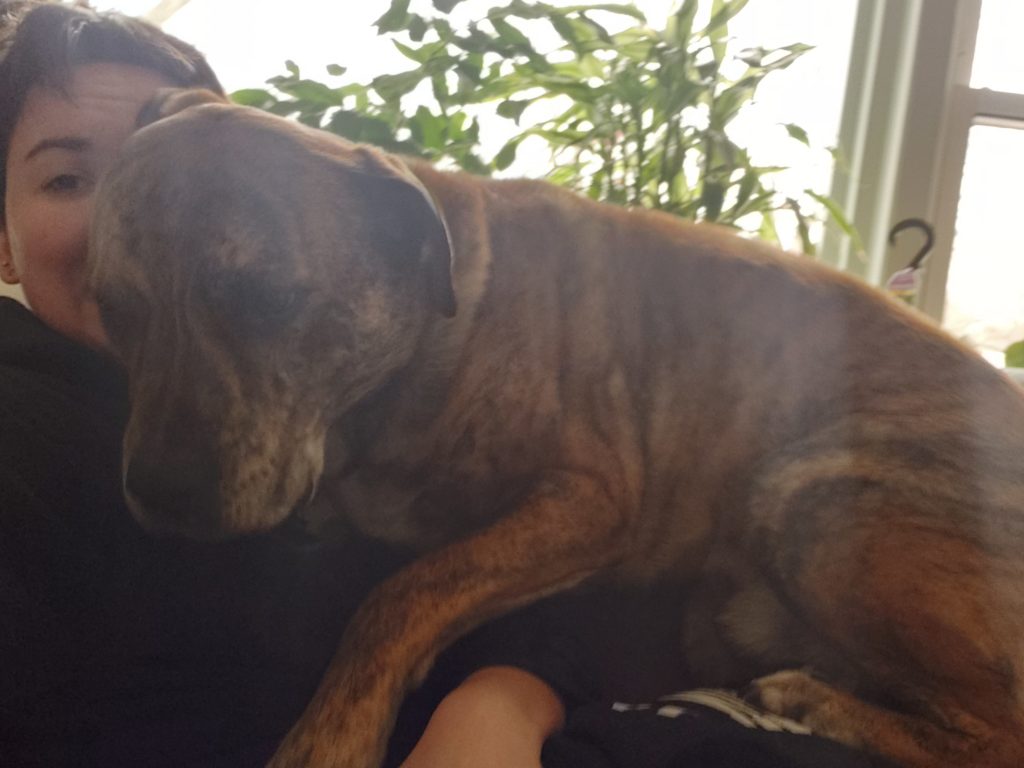A lot of people talk to their pets. I’m one of them. I ask Oso questions he’ll never be able to answer, I sing him songs that he doesn’t understand, and I occasionally throw in something that he does know like, “Do you want to go outside?” Humans are talkative beings. Sorry, Oso. But what if I told you that Oso can hold his own in some of our conversations? I sound crazy, right? Let me explain.

This may just look like a super cute picture of Oso, but it’s actually the beginning of a conversation. Here’s what he’s saying:
Oso: *puts head on couch* I’d like to come up on the couch.
Me: Okay, come up then.
At this point, one of two scenarios play out:
Scenario 1:
Oso: *comes up on couch and snuggles* Hooray snuggle time!

Scenario 2:
Oso: *looks at me without moving his head* There’s stuff in my way.
Me: Is something in your way? You’re ridiculous. *Continues chattering while clearing space for him on the couch* Come up then.
Oso: *looks at me without moving his head* There’s still not enough room.

Me: *Sigh* You’re the worst. *Moves my legs to give him even more space*
Oso: *comes up on couch, sprawls out, and falls asleep*
Now, I’ve clearly anthropomorphized some of this. I don’t *really* know his side of the story. But, what I do know is that we very consistently have this interaction. We have both learned this way of communication from one another. His head-on-couch behavior prompts me to create space for him and he comes up after I do so. He continues to put his head on the couch because he gets the space he’s looking for and I get snuggles so I continue giving him space. It may look unconventional but it definitely qualifies as a conversation. Communication is so much more than talking.
Expanding the picture
Oso learned how to use a “head down” behavior as a conversation starter not through this couch behavior, but during our training sessions. We often start our training sessions with his nail file board. However, after he scratched for a varied length of time, he consistently would become disinterested in continuing. In the beginning I took that to mean that he wasn’t interested in continuing our training session in general and would move on to my own thing. He would continue putzing around the room, though, as if to say that he wasn’t done with the interaction. Maybe I had gotten it wrong?
Around this same time, I was teaching him a “head down” behavior as a new trick. While I don’t remember the actual interaction, my assumption is that during a training session he decided to do a “head down” behavior instead of continuing to use his nail file board and I started reinforcing him for that. We continued the session but switched to a new activity. It only took a few of these interactions for us to finally be on the same wavelength (humans are slow, aren’t we?): he wanted to continue training but didn’t want to do his nail file board anymore.
The “head down” behavior took off after we learned how to communicate together in this way. He started doing it during training sessions any time that he wanted to switch to a new activity. I learned that he likes switching up what we’re working on far more than I was doing previously. He started doing it whenever he got frustrated because I wasn’t clear in what I wanted. He started doing it to ask to get up on the bed or when he wanted me to create space for him on the couch. He started doing it to ask for most things that he wanted (the only different one is when he wants to go outside). He learned that that behavior works for getting him things he wants.
The Applied Behavior Analysis (ABA) term for this type of behavior is called, “manding”. Essentially, it means requesting something that you want. Oso learned “head down” as a manding behavior because I treated the behavior as a form of communication instead of a random or coincidental occurrence. Not only is his “head down” behavior cute and unobtrusive, it is so much less annoying than many of the behaviors he could have chosen: barking, pawing, nudging my hand.
Here’s my challenge for you: start treating your pet’s behavior as a form of communication instead of a random occurrence. Look around and assess the situation. What could they potentially be saying to you? What has your pet “gotten” for doing this behavior in the past (attention, petting, treats, play time starts, etc.)?
What conversations will you have with your pet?
Now what?
- Observe your pet’s behavior free from judgment. Take away the morals– good behavior and bad behavior– and simply watch. Is there something that they do fairly regularly?
- After observing their behavior, start noticing the situation around that behavior. What happened before? What happens after? Again, this step should be free from judgment.
- Are there conversations that you and your pet already have? Your observations may uncover some form of communication that you weren’t cognizant of!
- Is there a way that you’d like your pet to communicate with you? One of the easiest ways is to choose a behavior that your pet is already performing and reinforcing it. You can also choose to teach a new behavior and use that instead!
- Start training! I chose to reinforce Oso’s manding behavior not with food, but with “real life” reinforcers like access to furniture and fun training exercises.
- Post pics and videos of the conversations you have with your pet on our Facebook page! We’d love to see them.
Happy training!
Allie

